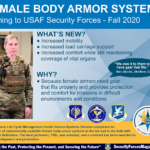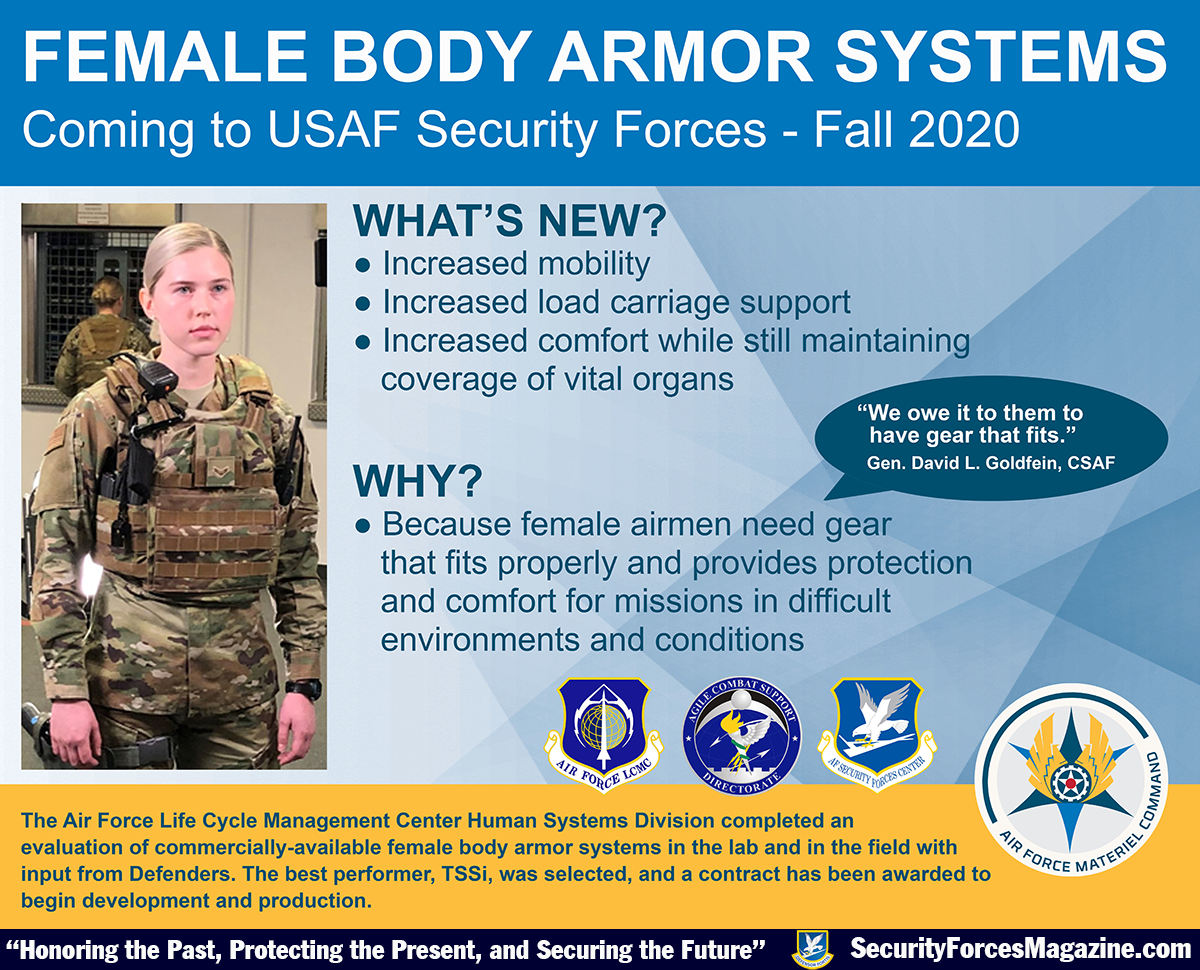
WRIGHT-PATTERSON AFB, Ohio (AFNS) — The Air Force Life Cycle Management Center Female Fitment Program Office has awarded a contract to begin production and development for body armor designed to better protect female Airmen during combat and contingency operations.
Finding uniform items and gear optimized for female Airmen is an Air Force Chief of Staff initiative. The Female Fitment Program Office was created in response to identify problems and find solutions quickly. The office partnered with the Air Force Security Forces Center in San Antonio to find a “sufficient armored plate carrier system that addresses appropriate form, fit and function while providing adequate protection for female Airmen.”
“This is a perfect example of Air Force Materiel Command getting feedback from the field and delivering the Air Force we need to the warfighter,” said Gen. Arnold W. Bunch Jr., AFMC commander. “I’m proud of the team pulling together to do what is right for our Airmen. They deserve gear that offers the protection they need while allowing them to complete their mission.”
AFLCMC’s Human Systems Division is the lead organization to assess, evaluate and acquire new body armor for Security Forces Defenders and other female Airmen whose jobs require them to operate in dangerous environments. The new body armor will be specifically fitted to the female body preventing exposure to risks.
“Our female Airmen had gaps due to poor fitment issues,” said Maj. Saily Rodriguez, Female Fitment Program manager. “The new gear fits properly which improves protection and offers better comfort for gear that has to be worn in difficult environments and conditions.”
The program office conducted an evaluation that included laboratory and field assessments. The contract was awarded to TSSi of Harrisonburg, Virginia for the Aspetto “Mach V” system that was deemed the best solution in terms of price, effectiveness and fitment.
“The feedback during our field assessment was overwhelmingly positive. This is something our Airmen want because it offers a great benefit to their health and safety,” Rodriguez said.
The first product deliveries are expected in Fall 2020.
By Daryl Mayer, Air Force Life Cycle Management Center Public Affairs / Published June 24, 2020

